Metaverse: The Future of Technology
By - Mrudula Rothe ,Appetizer of knowledge

If you’re involved in technology in any shape or form, chances of you’ve not encountered the term ‘Metaverse’ is next to impossible. Until Thursday 28 October 2021, the term “Metaverse” was known only to lexicographers and science fiction enthusiasts. It is when Facebook re-branded as ‘Meta’, the Metaverse entered into mainstream public consciousness and has been a hot topic for discussion. To hear tech CEOs like Mark Zuckerberg or Satya Nadella talk about it, it begs the question
- Is the Metaverse the next big thing?
- Or is it just another balloon waiting to burst?
To a certain extent, talking about “the Metaverse” is a bit like having a discussion about “the internet” in the 1970s. Field of Technology is full of surprises. However, the biggest developments are often anticipated decades in advance of the technical capacity to produce them. The term ‘Metaverse’ was first coined by Neal Stephenson in 1992 in his science fiction novel ‘Snow Crash’. The Metaverse in Snow Crash is a 3-D virtual reality space accessed through personal terminals and virtual reality goggles.
According to Stephenson:
Like any place in Reality, the Street is subject to development. Developers can build their own small streets feeding off of the main one. They can build buildings, parks, signs, as well as things that do not exist in Reality, such as vast hovering overhead light shows, special neighborhoods where the rules of three-dimensional spacetime are ignored, and free-combat zones where people can go to kill each other.
If you find this similar it’s because many multiplayer online games possess these properties. In Second Life (Released in 2003) users can customise realistic avatars, meet with other players, create virtual items, own virtual property, and exchange goods and services.
The Metaverse is the convergence of these two ideas that have been around for many years: virtual reality and a digital second life.
It’s you and your avatar interacting with others in a digital environment.
What is Metaverse?
The whole concept of the Metaverse sounds like stuff you can only read from science fiction novels. Today’s online activity can be described as a 2D experience; the Metaverse is a 3D experience that can utilize augmented reality (AR), virtual reality (VR), and persistent connections to create an immersive world. The Metaverse is typically portrayed as a sort of digital “jacked-in” internet – a manifestation of actual reality, but one based in a virtual (often theme park-like) world, such those portrayed in Ready Player One and The Matrix.
The core concept behind the Metaverse is clear. Telepresence—defined as an immersive state that allows a person to feel present in a virtual space—is key to facilitating Metaverse experiences.
AR and VR are inspirational technologies that are playing a part in developing the experiences that define the future vision of the Metaverse.
The Metaverse will require a value layer underpinned by decentralized infrastructure such as blockchains to empower users as much as platform developers in building up the Metaverse.
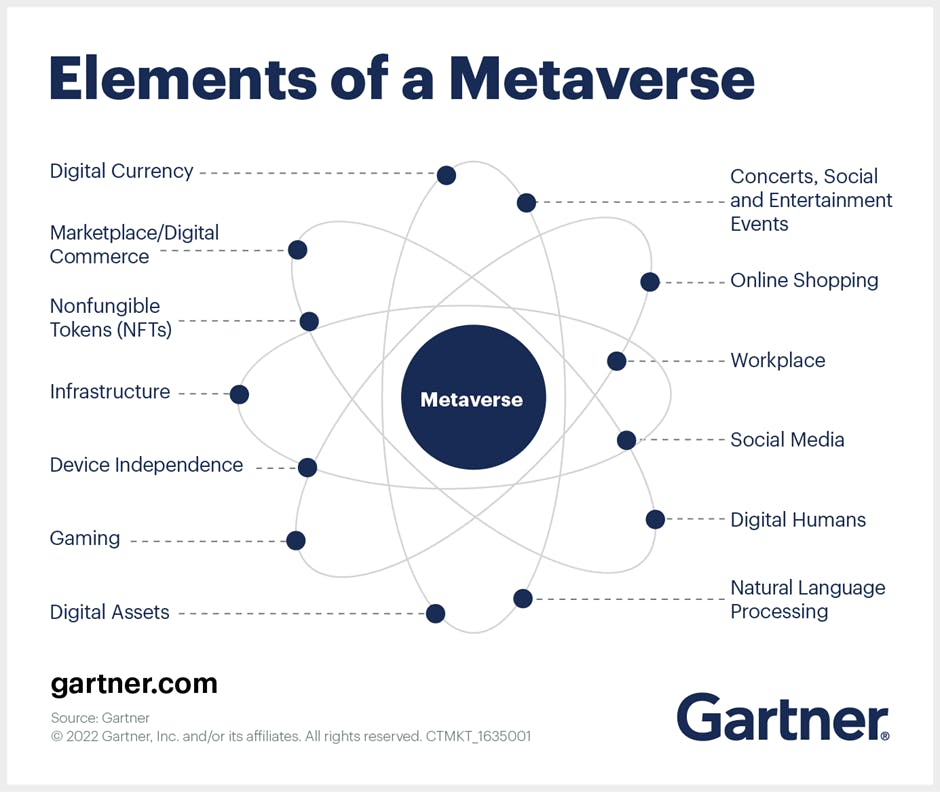
Venture capitalist Matthew Ball describes them on his website:
The Metaverse is a massively scaled and interoperable network of real-time rendered 3-D virtual worlds which can be experienced synchronously and persistently by an effectively unlimited number of users with an individual sense of presence, and with continuity of data, such as identity, history, entitlements, objects, communications, and payments.
Companies involved in Metaverse
Microsoft

The company has hundreds of millions of user identities through Office 365 and LinkedIn has an extensive suite of work-related software and services that span all systems/platforms/infrastructure. It has clear technical experience in massive shared online content, and a set of potential gateway experiences via Minecraft, Xbox + Xbox Live, and HoloLens. Microsoft is a global leader in technology and having successfully adapted from enterprise to consumer maintaining a dominant position in the industry.
The Verge reported that Microsoft will use artificial intelligence to listen to the creator’s voice to animate an avatar. Nadella has been heard burbling about his desire to create an “enterprise Metaverse”.Microsoft, a serious computer company, laid out nearly $70bn of shareholders’ money to buy computer gaming company Activision Blizzard. Microsoft will be a primary driver in the world of Metaverse. Interesting Fact:- Microsoft’s Metaverse doesn't have legs.

“I expect people will transition from seeing us as a social-media company to seeing us as a Metaverse company.”- Mark Zukerberg
Facebook CEO Mark Zukerberg’s obsession with Metaverse is fairly clear. It's impossible to separate Facebook's vision of a future where everyone has a digital wardrobe to swipe through. Facebook really wants to make money selling virtual clothes.Facebook remains the one FAAMG company stuck purely at the app/service layer. Through the Metaverse, Facebook could become the next Android or iOS/iPhone (hence Oculus), not to mention a virtual goods version of Amazon. Facebook has immense advantages from Metaverse. It has more users and user-generated content created each day than any other platform on earth, as well as the second largest share of digital ad spend, billions in cash, thousands of world-class engineers.
Unity
According to unity:
Our vision is a lot bigger than one organisation. At Unity, we believe there will eventually be a digital twin of every real-life object, environment, and even people. Our goal is to enable every creator to have the tools to do so.
Unity’s fundamental belief is that the world is a better place with more creators in it. They think that immersive technology, like real-time 3-D (RT3D), AR, VR, and extended reality (XR), can help creators better understand the world and unlock new innovations.
A few industry leaders that are building digital twins:-
Hyundai’s Meta Factory
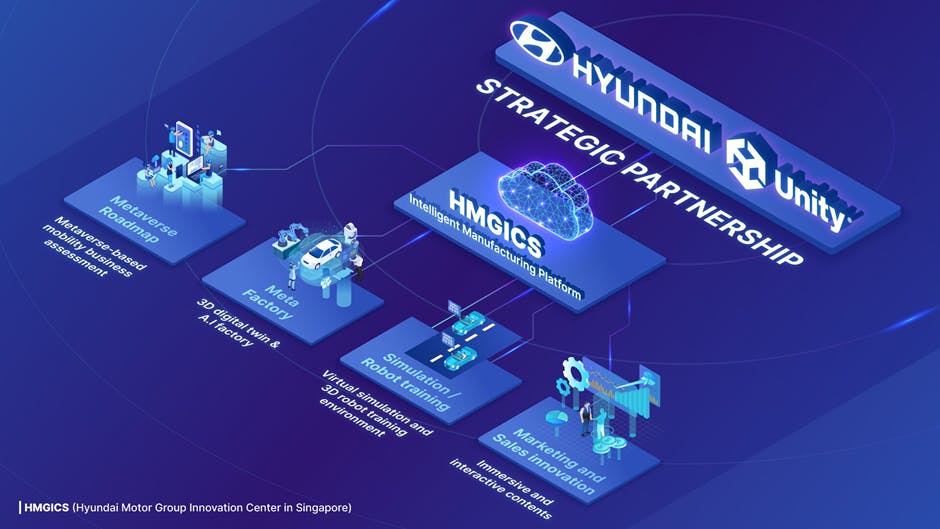
Samsung’s Digital twin store

Dress-X and H&M collaboration

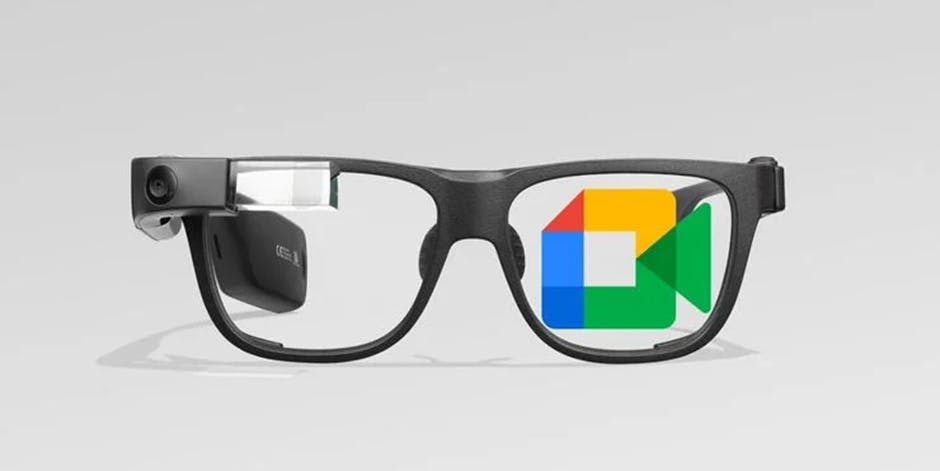
Google has a storied history with VR and AR products, but now it seems the firm is going all in by building its own Metaverse. When it comes to offering both VR and AR products, Google is one of the few organisations that can boast to have launched devices for both categories. Google debuted its Google Glass AR headset in 2013, with many believing it represented the future of wearable technology.
Google introduced Google Cardboard in 2014 and the Daydream headset in 2016. Both were smartphone-based VR systems aimed at more casual users. Both systems also had their issues, and neither really took off.
And many other companies are working on this. Here is a gist of some companies.
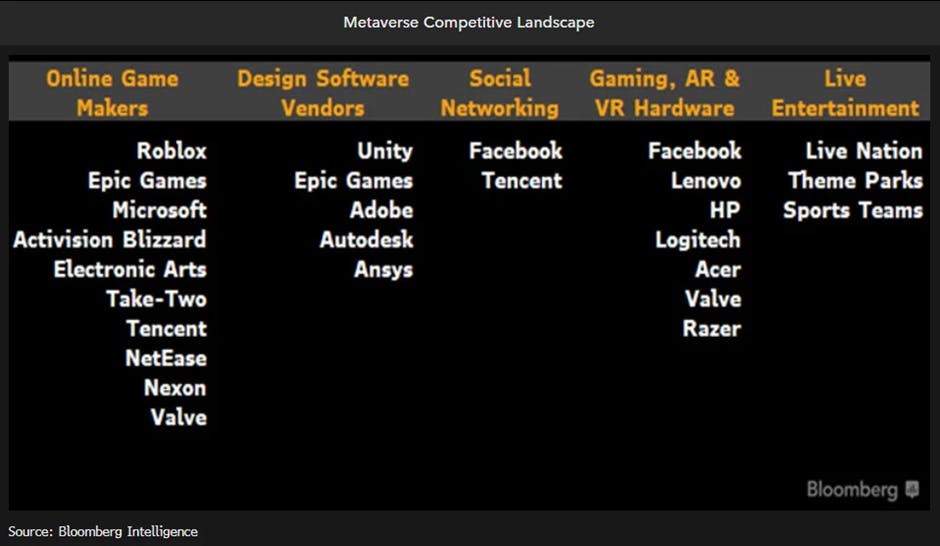
Problem with Metaverse
Data and privacy
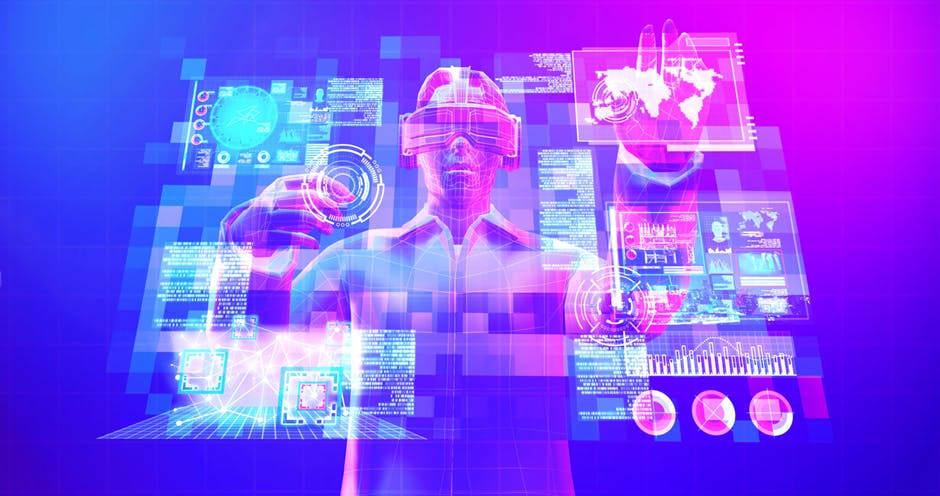
Surveillance will follow us into ‘the Metaverse,’ and our bodies could be its new data source - The Washington Post
Virtual reality headsets learn more about you than traditional screens. That could be good news for creepy companies.
How will your data be used in the Metaverse? Is the Metaverse just another clever ploy by tech giants to get more data?
The Metaverse is a unique environment that requires new security methods to protect its users’ data and privacy.
Mental Health

‘This is creating more loneliness’: The Metaverse could be a serious problem for kids, experts says
“All of these new tools, and all of these new possibilities, could be used for good or for evil,” Mitch Prinstein, a clinical psychologist
Recent research has shown negative effects of social media on the psyches of children.
The use of 3-D digital avatars in the Metaverse carries another problem, too: Being able to modify your likeness to project a version of yourself that differs from real life can be “pretty dangerous for adolescents, in particular,” Prinstein says. One such game publisher, VRChat, already shows evidence of dangers for young users. In December, research from the nonprofit Center for Countering Digital Hate (CCDH) found that minors were regularly exposed to graphic sexual content, racist and violent language, bullying and other forms of harassment on VRChat’s platform, which is typically accessed through Meta’s Oculus headsets.
VR Sexual Harassment

According to Meta, on November 26, a beta tester reported something deeply troubling: she had been groped by a stranger on Horizon Worlds. On December 1, Meta revealed that she’d posted her experience in the Horizon Worlds beta testing group on Facebook.
Meta’s internal review of the incident found that the beta tester should have used a tool called “Safe Zone” that’s part of a suite of safety features built into Horizon Worlds. Safe Zone is a protective bubble users can activate when feeling threatened. Within it, no one can touch them, talk to them, or interact in any way until they signal that they would like the Safe Zone lifted.
Vivek Sharma, the Vice President of Horizon, called the groping incident “absolutely unfortunate,” telling The Verge,
“That’s good feedback still for us because I want to make [the blocking feature] trivially easy and findable.”
It’s not the first time a user has been groped in VR—nor, unfortunately, will it be the last. But the incident shows that until companies work out how to protect participants, the Metaverse can never be a safe place.
No matter how long the Metaverse achieves its full form, or whether it’s happening at all, one thing’s clear: things are going to change in a big way.
The Metaverse was just an idea but soon, it could become reality because many large technology companies are betting that it will be as big—if not bigger—than the internet is today.
